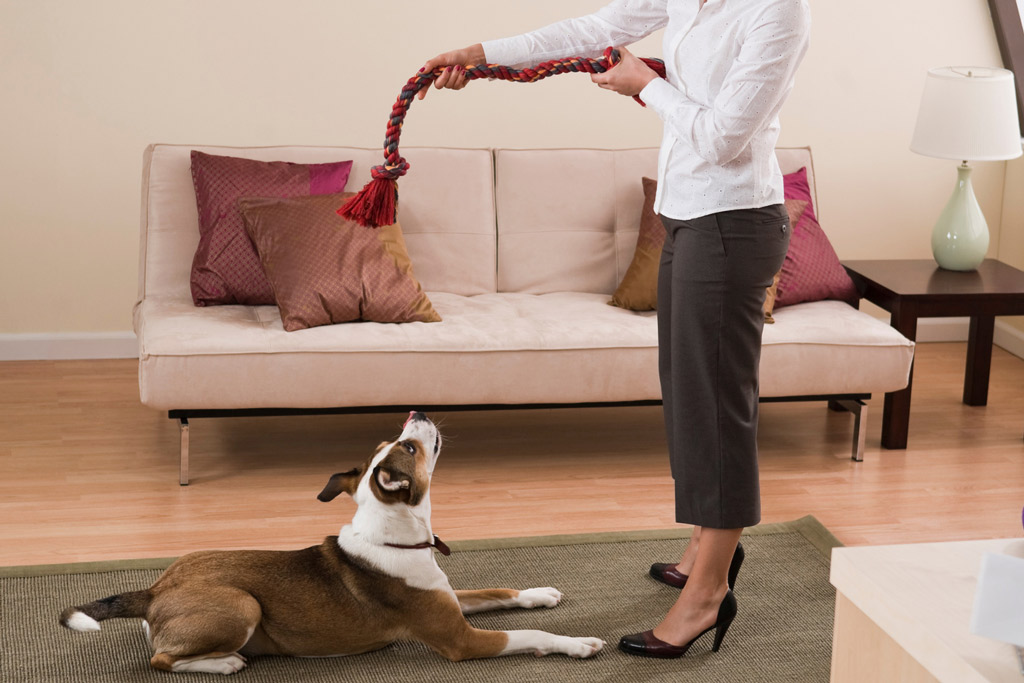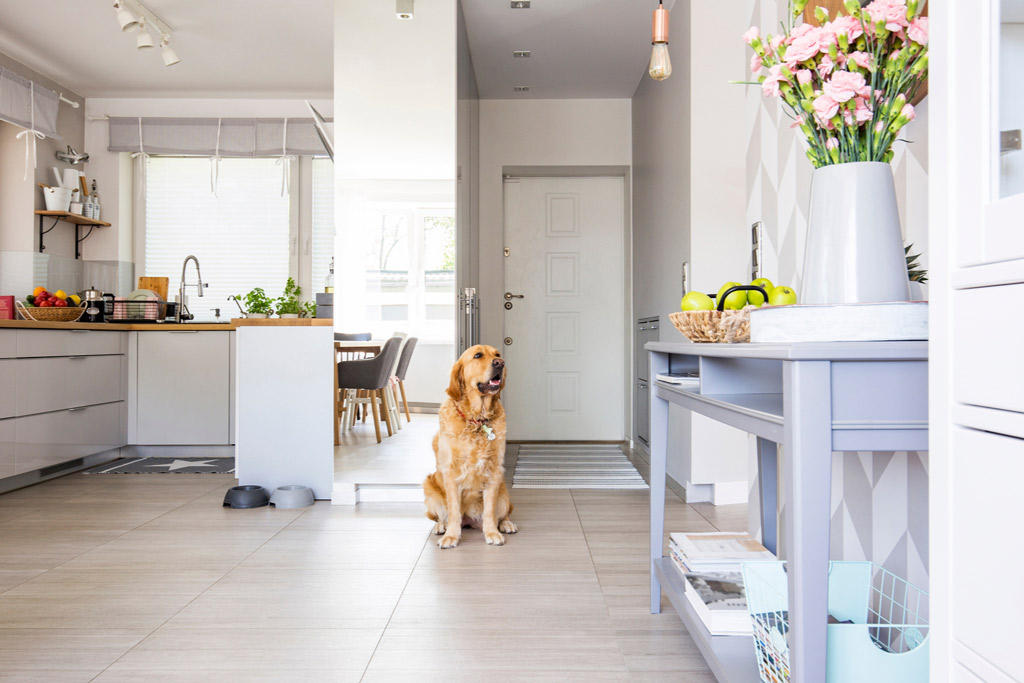
For most dog owners, one of the main concerns is leaving their pooch home alone for a short period e.g. while at work.
Although it is hard to leave your furry friend behind, your dog can (and should be able to) handle short periods of alone time just fine.
Let’s see how you can convert this recurring situation into a safe, healthy and comfortable experience for your pooch.
Dog Home Alone Safety
Here’s a list of suggestions that you can put into practice to guarantee your dog’s safety when he’s alone at home:
#1 – Dog-Proof The House
This is one of the first things that I recommend to everyone that brings a dog into their home.
It’s sound basic but dogs can be a handful and they can easily get themselves into trouble. Plus, because of their curious nature, they can jeopardize their security unintentionally.
As a rule of thumb, keep your dog away from anything that can be dangerous or that you simply don’t want it to get damaged.
Here’s how to dog-proof your home:
| ❐ Use baby gates that limit access to rooms or stairs. |
| ❐ Get covers for electrical outlets. |
| ❐ Hide cables behind furniture. |
| ❐ Put safety locks for your kitchen and bathroom cabinets. |
| ❐ Keep all doors closed that are accessible within your dog’s safe zone. |
| ❐ Keep accessible windows closed too. |
| ❐ Keep breakables and tearables out of reach, from shoes to glass vases. |
| ❐ Store dangerous and toxic substances for your dog, including human food, medications, plants, cleaning products. |
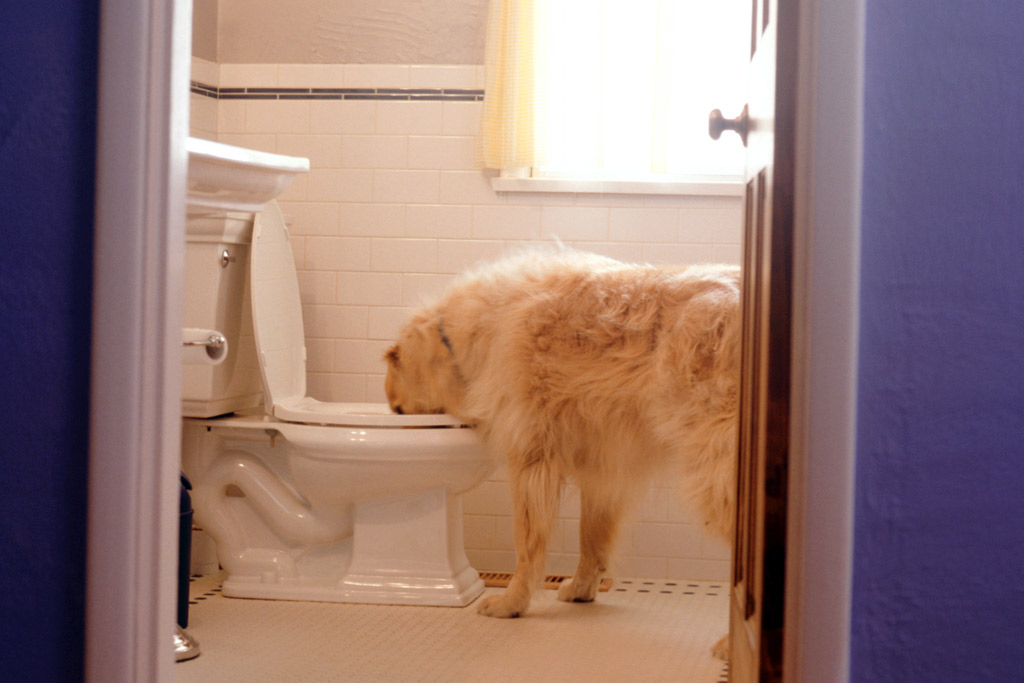
#2 – Train Your Dog to Be Home Alone
Preparation is the key to leaving your dog alone.
Getting your pooch gradually ready to be alone will result in a confident dog that stays calm and comfortable by himself. He will learn that he’s safe and that you will always return with him.
For achieving that, train your dog from day 1. As part of house-training your pooch, consider crate training.
You don’t necessarily have to lock your dog in a crate. But you have to teach him to be okay in a confined space that has enough room for him to move and to stay by himself for a while.
You can start with 5-minute sessions and build up to 20 minutes.
- At first stay at home, by your dog’s side.
- Then, just out of your dog’s sight.
- And gradually step out of the house.
In the How Long Can I Leave My Dog Alone? blog post, you can better understand how long is considered safe to leave your pooch at home alone (age plays a part in this).
Insider Tip: Reward your pooch during the training process to encourage him to stay calm when alone and for him to know that he’s being a good boy!
By training your dog to be alone, you will prevent your dog from ever becoming anxious when by himself – also known as separation anxiety. Also, you can hire a dog walker for a lunchtime break or a dog sitter while your pooch is getting used to being alone.
Head over to my favourite dog care page to find out more!
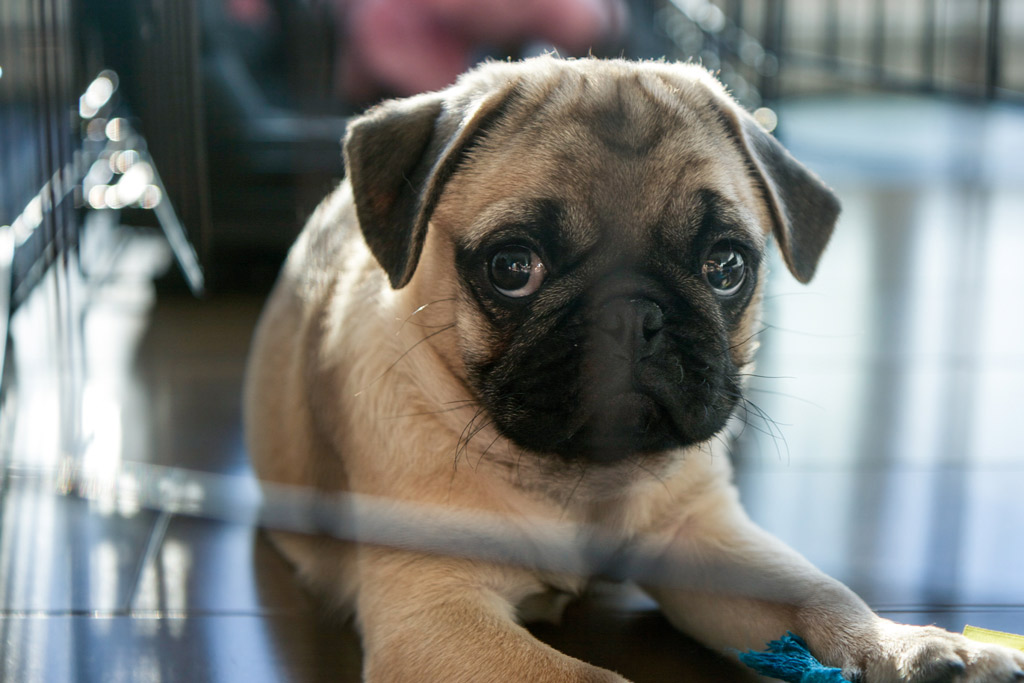
#3 – Keep Your Pooch In His Safe Zone
Setting up a dog safe zone is one of the effective strategies for easing the process of leaving your pooch alone at home.
Basically, you are setting limits to potentially harmful situations and at the same time providing your pooch with the comfort he needs.
Your dog safe zone provides many benefits for both of you:
- You have crafted dog-friendly area that is safe for your pup, i.e., hazard-free.
- It helps to train your dog to be away from you for a while, preventing separation anxiety.
- By the time you start leaving your puppy alone, he already feels comfortable, relaxed and safe in his own space.
- Ultimately, your pooch goes into this area on his own, and also when you give him a verbal cue.
- Because of all of these, you worry less and feel more confident leaving your dog alone.
- It is also helpful for creating a sense of security when a dog sitter or walker is going to care for your pooch.
Think of your dog’s safe zone as an extension of his crate (Amazon link) or bed. When you leave the house, you can either limit the space where he’s allowed using a playpen or baby/pet gates (Amazon links) that compliment your interior without compromising your dog’s security.
Either way, he should be restricted from wandering around the rest of the house to avoid dangerous situations or accidents (urinary, reaching to something valuable or harmful, etc.)
Finally, never leave your dog held up in his crate (door closed) for the whole day. He needs to be able to move around!
A crate should be temporary location tool used for training (this is the time you close the crate door) and only used for short periods of time (for example, no more than 2 hours).
Insider Tip: As part of your dog’s safety when alone, don’t leave your pooch in the garden when you are not at home. This can lead to fatal situations like your dog escaping, or suffering from hypothermia, sunburn, or dehydration, for instance.
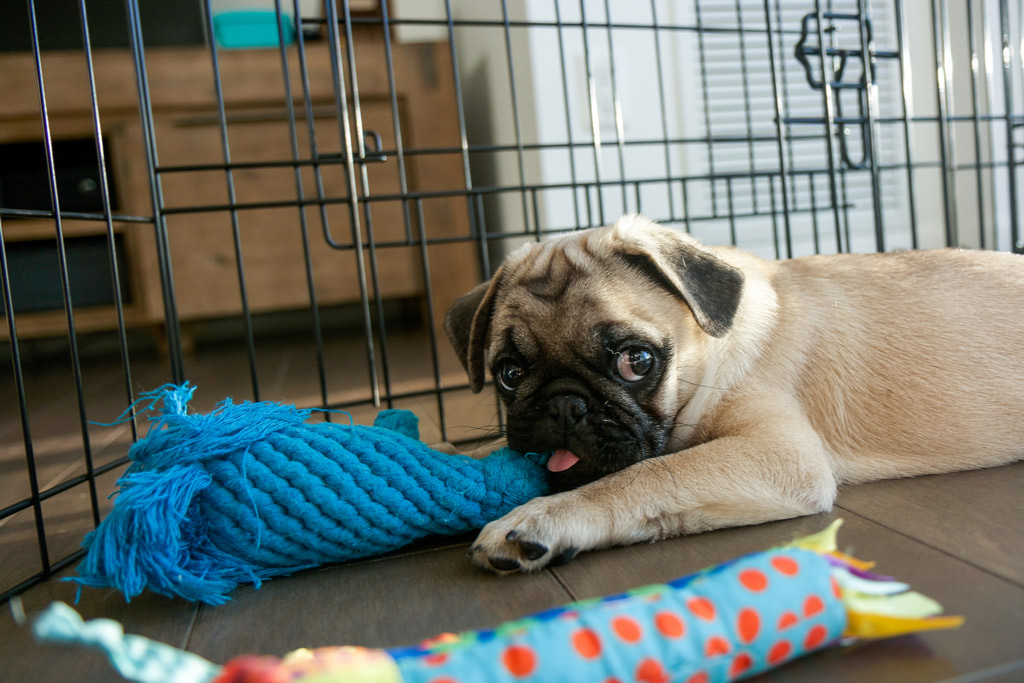
#4 – Tire Your Dog Before Leaving
Exercising your pooch before leaving is the best way to tire him.
If your furry friend has gone for a walk and spends some time sniffing, for example, he is more likely to sleep during the day. The result you’re looking for is that when your dog gets home, he goes to his bed to snooze.
How much exercise and what kind depends on your dog’s age, fitness, body type, and state of health, but also on the weather.
By exercising your dog, you will not only tire him out but also prevent boredom. According to PETA (People for the Ethical Treatment of Animals), an animal rights organization, dogs don’t want to be left alone due to:
- Loneliness.
- Lack of stimulation.
Lack of mental and physical stimulation can lead to various health and behavioural problems such as:
- Restlessness and boredom.
- Destructive chewing.
- Over-excitability and rough play.
- Depression.
- Frequent barking or whining.
- Obesity and lethargy.
- Escaping or digging.
- Irritability.
So, if your pooch misbehaved whilst you were away, don’t punish him; it’s not his fault! Instead, use our How to Keep My Dog Entertained While at Work guide for some tips that might help you and your dog.
Finally, before leaving make sure to leave water in an accessible place and provide some entertainment, which also helps to prevent the problems listed above.
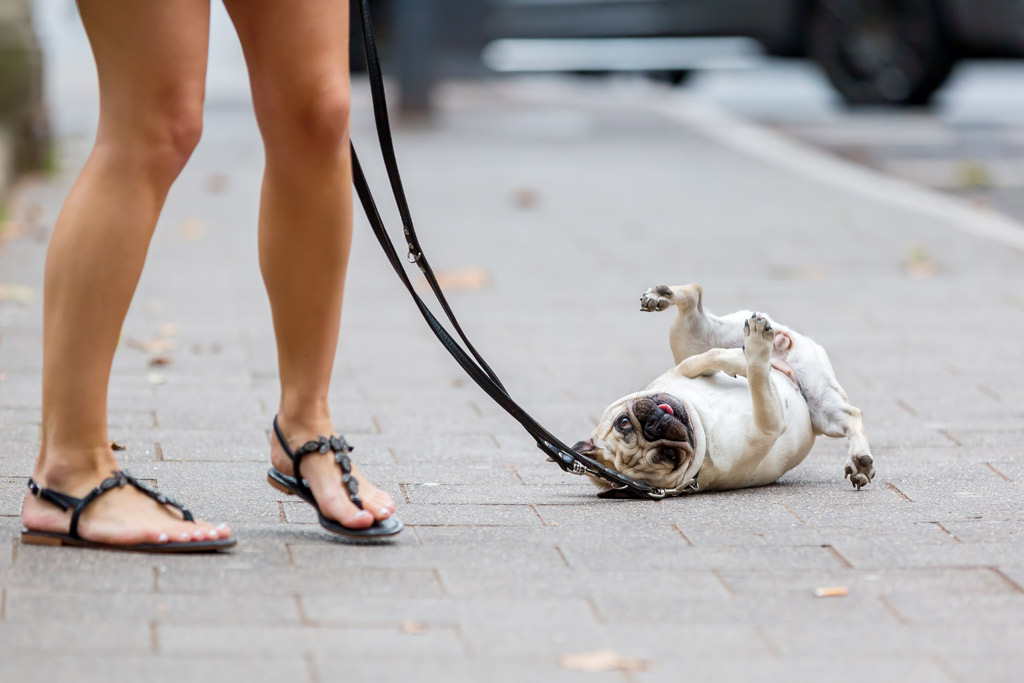
#5 – Keep an Eye On Your Pooch
Surveillance gear is an option to consider when it comes to dog home alone safety. Technology has come a long way when it comes to pets, and there are a variety of options out there that help worried dog parents when they are away.
- There are basic cameras that let you check in on your dog while you are at work.
- There are also some dog cameras that offer more functions. For example, if you want more of an interaction with your dog, you can get your hands on a dog camera with 2-way audio that also has a treat dispenser function. Furbo is a great example of this.
- Webcams like Nest Camera give HD footage, high-fidelity audio and the possibility to notify you of loud noises such as barking or whining. Also, you can talk directly to your pooch thanks to the camera’s internal speaker.
- Finally, there are other home security systems that you might consider for the whole family’s benefit. Nest Protect is an internet-connected smart smoke alarm that will send updates about your home to your phone. If smoke or carbon monoxide is detected, you’ll know in seconds, no matter where you are.
Note: the links above will take you to Amazon.
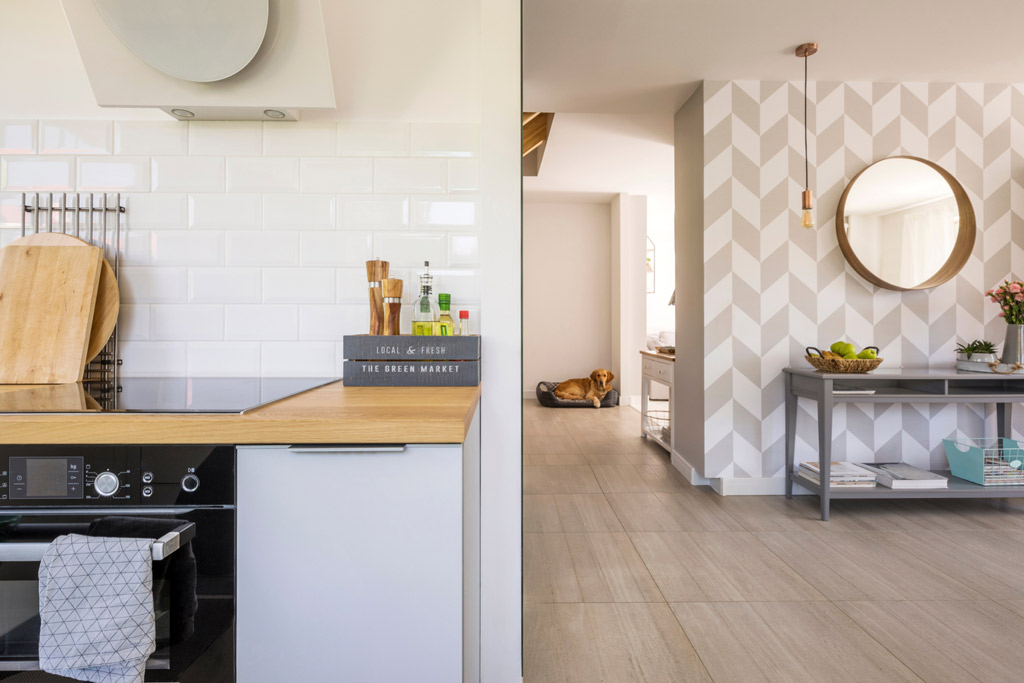
#6 – Consider Separating Your Pets
If you have multiple dogs or other pets in the house, consider whether you need to separate them or not.
You know best how they get along and how likely it is for them to have disagreements. If your dog’s sleep separately at night, you can take this as an indication to keep them separate when you are away.
The main reason dog owners separate their dogs while away is to prevent possible injuries.
If you think that it might be best to keep them separate while you are not home, establish different safe zones for them. You can keep dogs apart by simply using a dog gate to keep them in separate rooms, for instance.
Multiple pet household story: When growing up, my Mastiff and Boxer would sleep with our cats, but not together. So we provided separate spaces that they could call their own. However, my parents now have two Spanish Mastiffs that are siblings and they like sleeping together, and when they stay apart it’s because they are guarding different parts of the farm.
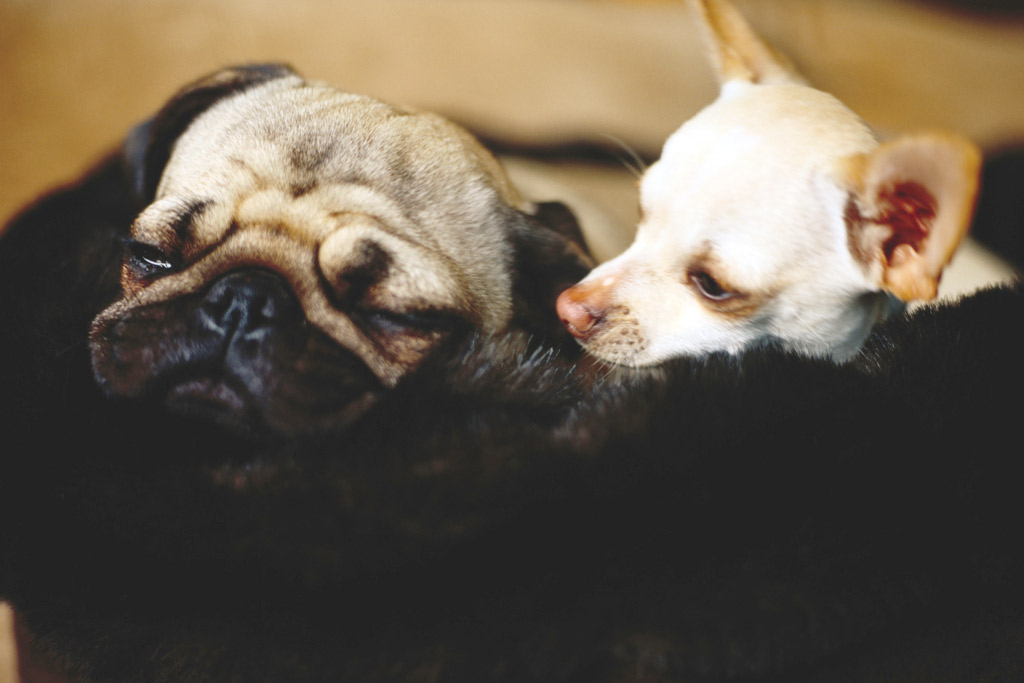
#7 – Soothe Possible Fears and Anxiety
Anxiety is a major concern for many dog parents, especially when leaving their dogs alone.
If you are training your dog to gradually tolerate being alone (as I explained in #2), you should be able to prevent this situation. However, if your pooch is still adjusting or if he’s an adopted dog, there are other measures that you can take to ensure your dog’s safety and wellbeing.
Soothing your dog’s uneasiness:
- Leave the radio on and choose a non-stop classical music channel; it’s been known that dogs find it relaxing. Also, you can play some relaxing music designed for dogs that are found to soothe anxiety in our canine friends.
- Turn on the White Noise Sound Machine, it works wonders with dogs that suffer from anxiety. It also helps them sleep better (this is also applicable for humans!)
- Wraps like Thundershirt anxiety jacket help your dog relax when feeling fearful. For instance, when there’s a thunderstorm and he’s unable to relax and take a nap, this .
- Lavender essential oil has also been proven to reduce the stress response in dog’s. You can place two drops on your dog’s collar or bedding before a known stressor occurs. Otherwise, you can use a diffuser around your house for an overall calming effect.
- As an alternative to lavender, Adaptil is a well-known diffuser to curb stress-related unwanted behaviours. The diffuser emits an odourless pheromone that provides a strong signal of comfort and security to dogs.
Note: the links above will take you to Amazon.
P.S. If you have any concerns and are looking for solutions + insights, I recommend giving our How to Calm Dog Fears and Anxiety blog post a read.
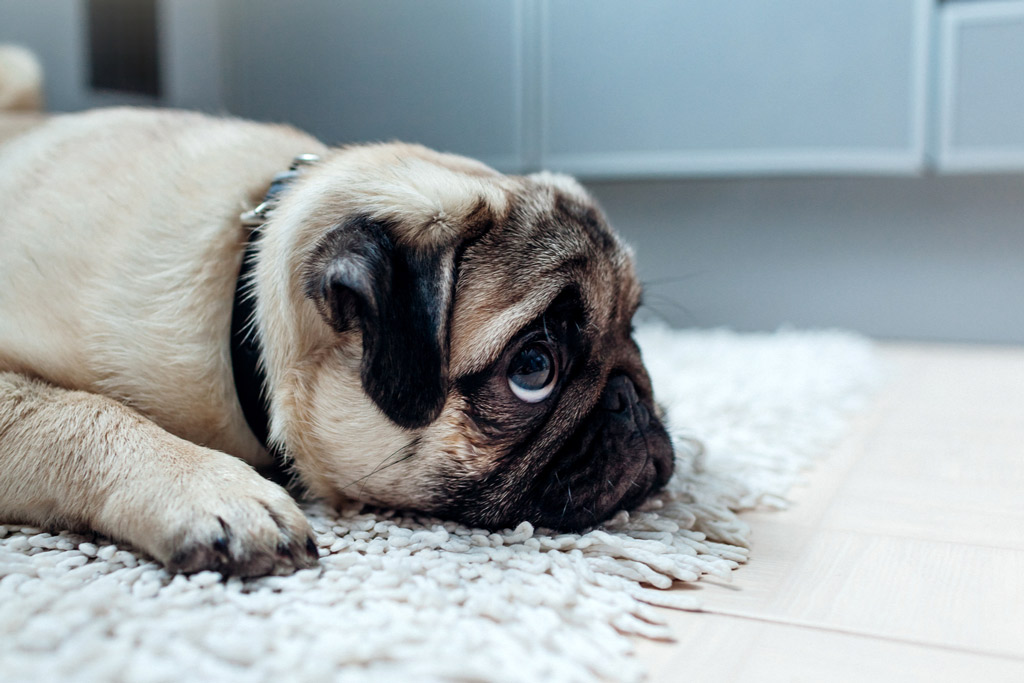
#8 – Include a Wearable Activity Tracker
Another dog home alone safety measures is a dog tracker.
This option is especially useful if your dog is an escape artist. However, I think it will provide peace of mind to many dog parents regardless of their dog’s tendency for wanderlust.
Losing your dog is a dog parents worst nightmare and microchips cannot help you locate your dog.
Thanks to these GPS tracking devices, you are able to know where your dog is at all times. You can simply use your phone to check on your dog while away. Brands like Whistle (Amazon link) will map your dog’s movements and report back to you. You just need to attach the monitor to your dog’s collar.
An alternative is Tractive, a GPS tracking device attached to your dog’s collar! This will allow you to locate your dog every time. 🙂
#9 – Contemplate Other Dog Safety Hacks
Depending on where your dog’s safe zone is, there are a few dog safety hacks that will definitely keep your pooch out of trouble!
- Toilet-bowl lid latches: Remember the photo in #1??
- Dog-proof trashcan: It’s the best way to keep your dog from dumpster-diving.
- Dog steps: If your pooch loves higher grounds (your sofa), you need to make sure that he has a safe way to get up and down. Jumping can be bad for dogs with joint problems.
- Dog food bin: It helps to store your dog’s food and also keep it out of reach.
- Dog alert window decal: This sticker could potentially help save your dog’s life in case of fire. Also, it could be a deterrent for thieves.
Note: the links above will take you to Amazon store.
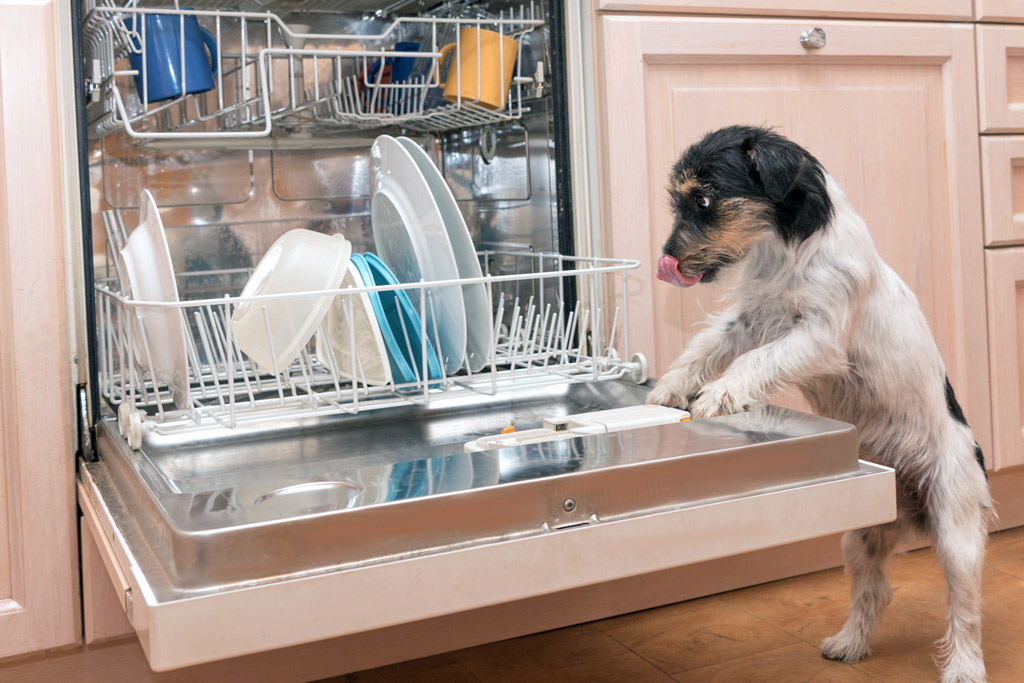
#10 – Address Your Dog’s Needs When You Return
Finally, once you get home, you should expect that your dog will need your attention and care after spending some time by himself 🙂
It’s good to be prepared for it and dedicate some quality time to your pooch (although you’ve probably missed him equally as much!). Following the code of practice for the welfare of dogs (source), your dog’s needs include:
- A suitable environment.
- A balanced diet.
- Daily exercise.
- Regular training.
- Health care.
- And adequate companionship.
When you get home, after saying hello, you should address his most pressing need – having to pee and poop.
If possible, instead of a potty break, take your pup for a walk. Alternatively, you can have some playtime together. After that, you can feed him and later on chill together for some cuddle time.
Whatever your routine after you get home, keep it consistent so your dog feels more assured and also knows what to expect. This has very beneficial effects on his general wellbeing and behaviour. It also helps your dog to manage better the time he is alone at home.
